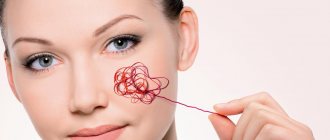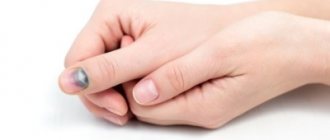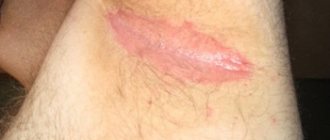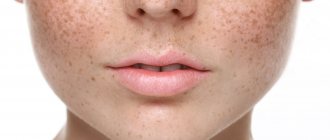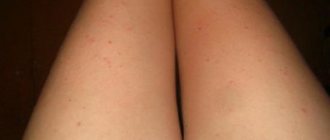There are many types of allergies known. Allergens provoke the body to a negative reaction; the symptoms increase every year and are replenished with new features.
The sharp increase in allergy sufferers and the emergence of new allergens and symptoms is a consequence of the fact that the environment is polluted. These changes have a bad effect on the state of the human immune system, and it is responsible for the body’s susceptibility to allergens.
A common symptom among allergy sufferers is allergic itching of the skin. Itchy skin constantly brings discomfort to a person, irritates him, and makes him feel insecure. In addition, the allergy sufferer scratches the areas that are very itchy. This is additional physical torment for the body. Scratching that appears due to itching can become infected. This can cause unnecessary hassle and problems.
Itching is accompanied by red spots on the skin. Before you begin treatment for skin redness, you need to determine the cause of its appearance. Some people confuse an allergic reaction of the body, accompanied by such symptoms, with obvious primary signs of a dermatological disease.
What does a skin allergy look like?
An allergic reaction on the human body can appear at any age. It affects the skin of children and adult patients with equal frequency. The main manifestations of the disease are numerous or single red rashes in the form of spots on different parts of the body, which are accompanied by unpleasant sensations, in particular, intense itching and a tingling feeling. Often the surface of the spots peels off, cracks, or even becomes covered with purulent crusts (in case of infection).
Red spots on the body, as well as allergies on the legs and arms, are one of the most important signs signaling problems within the body. Manifestations can take the form of small roundness or be diffuse, affecting fairly large areas of the skin. Such rashes, as a rule, do not rise above the surface of the skin; they can appear quickly and disappear just as suddenly. Allergies on the legs, arms and other parts of the body are very itchy, which leads to scratches and infection in places where a person actively scratches the skin.
Prevention of itchy skin
To prevent the disease from recurring, it is recommended to follow preventive measures:
- Do not scratch areas that itch - this may cause additional infection;
- It is recommended to avoid exposure to ultraviolet radiation, visiting the beach, swimming in hot water, as this increases the itching;
- personal hygiene must be fully observed;
- Take a shower after a long walk to remove dust from your body.
You should not delay treating itching - it is better to do it immediately, since the allergy will only get worse over time, and its treatment will be more difficult.
Can chicory cause allergies and for what reasons?
Hay fever: symptoms and treatment of seasonal allergies during exacerbation in children and adults
Redness on a child’s bottom: what to do and how to treat skin irritation
Causes of allergic reactions and their mechanism of action
Skin allergies, red spots itching: treatment, photo
Allergies cause a specific reaction of the body to the ingress of a foreign body with sensitizing properties. The perception of such an agent as hostile gives rise to a chain of processes and the activation of defense mechanisms, sometimes working against one’s own cells. Why is this happening?
A number of factors contribute to the development of allergies:
- living in regions with poor environmental conditions;
- genetic predisposition to allergic reactions;
- exposure to a huge amount of chemicals on the body that poison it;
- chronic intoxication (allergies on the legs and sides of the body);
- long-term use of medications;
- frequent contact with household chemicals (allergies on hands in the form of red spots);
- poor nutrition.
The cause of allergies in a child may be hereditary lactose intolerance, as well as eating large amounts of sugar and baked goods. Therefore, it is very important for a baby to have a balanced diet, excluding foods that have sensitizing properties.
Hemorrhagic rash
An allergic reaction can manifest itself in several forms:
- urticaria, which is characterized by the appearance of red spots protruding above the surface of the skin and in appearance resembling a nettle burn;
- atopic dermatitis, often accompanied by intense itching and characteristic polymorphic rashes (represented simultaneously by various elements: erythema, vesicles);
- eczema, which can be very itchy (this variant of the disease is manifested by itching, burning, and the appearance of first weeping and then flaky rashes on the swollen surface).
What to do if red spots do not go away?
The following diseases that appear on the skin are a characteristic sign of an allergy:
- Nettle rash - a red rash of varying sizes appears on the surface of the skin, similar to a nettle burn. The disease begins after direct skin contact with the irritant. There are large and small spots with clear contours that do not stop itching;
- Eczema is an acute or chronic non-contagious inflammation of the skin. The symptoms of the pathology are similar to those of nettles, but the disease is more complicated: in addition to red spots in eczema, there is swelling of the skin with the appearance of a rash that resembles bursting blisters. The skin on the affected area itches and peels off;
- Dermatitis is a pathogenic skin lesion of an allergic nature, in which a red rash is very itchy. Usually the inflammation goes away after the interaction with the antigen ceases.
At the initial stage of the disease, it is necessary to visit a specialist who will prescribe treatment, because diseases manifest themselves not only as red spots that itch very much, but also have a risk of complications.
Often the symptoms of an allergy are very pronounced, then the patient is faced with the question of what contributed to the reaction. For example, when an allergen enters the respiratory tract, the allergy spreads to the external respiratory system - swelling, tearing, and itchy mucous membranes are observed.
Article on the topic: Main types of ointments for dermatitis on the skin
Food allergies contribute to dysfunction of the gastrointestinal tract; drug poisoning provokes a number of characteristic features of allergies. Treatment is prescribed strictly based on the diagnosis and the reasons that contributed to the body’s reaction.
Itchy red spots on hands
Allergy on the face in the form of red spots
Hyperemic rashes on the skin of the face are a fairly common occurrence in dermatological practice. They can appear due to allergies or occur under the influence of microorganisms. Sometimes such a symptom accompanies nervous disorders or is caused by hormonal imbalance in the human body. Spots on the face are quite amenable to drug correction, which should be prescribed by a qualified specialist, taking into account the etiology of the underlying disease, the degree of neglect of the pathological process and the nature of its course.
Causes of allergies
Red spots on the face can occur under the influence of a number of factors, including:
- the human body’s reaction to the penetration of allergens;
- infection of the skin by microorganisms, which is accompanied by redness, itching, peeling and an increase in overall body temperature;
- poor diet with consumption of a number of foods that can cause irritation to the skin of the face;
- severe stress and increased nervousness of the patient.
Features of the course and symptoms
Itchy spots on the face during an allergic reaction can differ in shape, size, and surface texture. Among their varieties, you can often find a small spot that tends to grow and merge into conglomerates, redness of fairly large areas of the skin that protrude above its surface, itch and peel, dry and wet formations, covered with or without scales.
The main symptoms of facial allergies are:
- the appearance of a red rash on the inflamed surface;
- hyperemic spots prone to grouping;
- development of intense itching in the affected areas;
- the appearance of peeling on the surface of reddened skin;
- sometimes cracking and the addition of a microbial infection.
Allergic spots on the arms, legs and other parts of the body
A rash on the body, which appears as red spots and itches, can develop in a variety of places, without having a specific localization. Most often it is a pathological manifestation, as the body’s response to the penetration of allergens. Treating the disease is not difficult. It is only important to understand that such therapy must be comprehensive and include local as well as general agents.
An important step on the path to recovery is changing your lifestyle and normalizing your diet. The patient needs to give up bad habits, stop eating processed foods and foods with an increased risk of developing allergies, including eggs, chocolate, citrus fruits, coffee, and the like.
Complications of allergic rashes in children
If a child has a red rash on the skin, it is most likely atopic dermatitis. This disease is accompanied by severe itching. If you do not pay due attention to the symptoms of childhood dermatitis, you can get complications in the form of eczema and skin infections due to constant scratching.
To prevent this, you need to contact a pediatrician who will prescribe the diet necessary in this case, antihistamines, and, if necessary, vitamins, drugs that support the immune system, sedatives, and antibacterial skin therapy.
Treatment of skin allergies in the form of red spots
Therapy is currently implemented both with medication and with the help of traditional medicine. Before starting treatment for red spots on the skin, they should be thoroughly diagnosed to identify possible causative agents of the disease or provoking factors contributing to the development of disorders.
Therapy with medications
Conservative treatment includes the prescription of local and general drugs aimed at eliminating all manifestations of the disease. The most popular are antihistamine ointments, gels, as well as antiallergic solutions used in injections and allergy tablets. In severe clinical cases, patients are recommended to take a course of hormonal therapy.
In most clinical cases, people who find characteristic areas of hyperemia (redness) on their facial skin and other parts of the body are helped by the following ointments:
- Traumeel is a modern homeopathic medicine that has an anti-inflammatory and wound-healing effect, quickly eliminates itching, and increases overall immunity;
- Bepanten is an antiseptic drug that effectively eliminates redness, itching and microcracks on the skin;
- Advantan is a topical hormonal agent for the treatment of allergies, eczematous manifestations and dermatitis;
- Radevit is a vitamin ointment containing vit. A, D, E, which perfectly softens the epidermis, reduces the manifestations of their inflammation, redness and peeling;
- Fenistil is an antihistamine that fights allergic reactions, relieves itching, hyperemia and swelling in the face.
Unfortunately, allergy medications have a serious number of contraindications. Therefore, not every person can take them. In this scenario, folk remedies for treating allergic manifestations come to the rescue, allowing you to get rid of the disease quickly and without harm to health.
Treatment with folk remedies
At home, an excellent addition to the main treatment of body allergies can be:
- compresses from a decoction of chamomile, string, nettle;
- infusion for washing based on celandine, wormwood, yarrow;
- rubbing with calendula tincture;
- lotions with sea buckthorn juice;
- activated carbon, tincture based on motherwort and mint, taken orally;
- dandelion infusion.
It is important to remember that it is better to start treating the disease at an early stage of its development. Therefore, at the first symptoms of an allergy on the body and the appearance of red spots, you should immediately seek help from specialists, which will avoid chronicity of the disease and the occurrence of its complications.
Treatment methods
What are the features of the treatment of itchy dermatitis? Once the patient has been diagnosed with this disease and the causes of its occurrence have been established, treatment begins. First you need to eliminate interaction with the stimulus. Then the doctor selects treatment, taking into account all the individual characteristics of the body, as well as the stage of the disease, age and the presence of other diseases in the patient. Treatment is carried out using medications:
- antihistamines can suppress the activity of the main provocateurs of the inflammatory process,
- enterosorbents help cleanse the body of various toxic substances,
- antibacterial and anti-inflammatory drugs are used when the presence of another bacterial infection is detected,
- Glucocorticosteroids are used in severe forms of the disease to relieve inflammation.
External agents are also recommended for use, but it is worth paying attention to the overall picture of the disease. If the rash is weeping, you can make special lotions with a solution of potassium permanganate, a solution of tannin, as well as furatsilin and 2% boric acid
On crusts that have already dried out a little, you can carefully apply brilliant green or fucorcin. When inflammation begins to release exudate, you can use special aerosols: Panthenol or Levovinizole
And in order to speed up the formation of crusts on wounds, it is recommended to use tar, ichthyol and zinc pastes. You can also use an ointment that contains steroid hormones (Diprosalik, Gioksizon, etc.). They are very effective and popular for skin diseases. When the wounds begin to fester, the doctor prescribes broad-spectrum antibiotics.
Diprosalik, hormonal ointment
